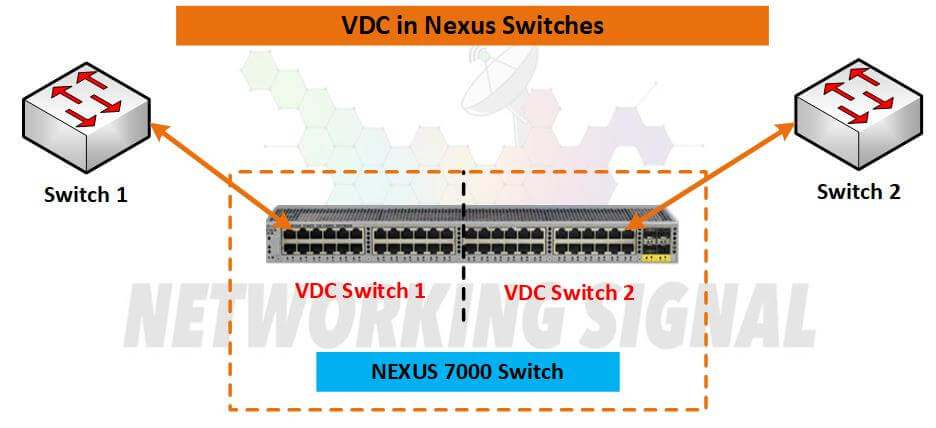What is VDC in Nexus Switches?
Virtual Device Contexts (VDC) is a feature in Cisco Nexus switches that allows for the creation of multiple virtual devices within one physical device. This enables each VDC to function as an independent device, with its own configuration, capabilities, and resources.
This provides flexibility and scalability, as well as the ability to segment traffic and isolate problems within a single device. VDCs can also be used to create redundant systems, providing increased availability and protection against failure.
What are the Uses of VDC?
VDCs can be used for a variety of purposes, including:
Segmenting traffic: By creating multiple VDCs, each with its own set of ports, you can segment traffic and isolate problems within a single device. This can be useful for separating different types of traffic, such as voice and data, or for creating separate development, test, and production environments.
Creating redundant systems: VDCs can be used to create redundant systems, with each VDC running on a separate physical device. This provides increased availability and protection against failure.
Improving scalability: VDCs can be used to improve scalability by allowing additional resources to be added to a device as needed. This can be useful for accommodating growth or for providing additional capacity during peak periods.
How Do Create VDC in Nexus Switch?

Creating a VDC is simple with the Cisco Nexus switch. Here are the steps:
1. Log in to the switch and enter global configuration mode.
2. Enter the VDC command followed by the name of the VDC you wish to create.
3. Assign a unique ID to the VDC with the id command. This ID must be between 1 and 255 and cannot be used by any other VDC on the switch.
4. Configure the VDC’s resources with the resource command. This includes specifying the amount of memory, CPU, and ports that will be made available to the VDC.
5. Exit global configuration mode and enter the new VDC by typing VDC followed by the name of the VDC.
Configuration Commands
- switch1(config)# vdc red
- switch1(config-VDC)# id 1
- switch1(config-VDC)# resource memory 512
- switch1(config-VDC)# resource CPU 100
- switch1(config-VDC)# resource ports 24
- switch1(config-VDC)# exit
You have now successfully created a VDC on your Cisco Nexus switch!
How to Verify the VPD Configuration?
To verify the VDC configuration, use the show VDC command. This will display information about all VDCs on the switch, including the name, ID, and resource allocation for each VDC.
- switch1# show VDC
- switch1# show module
- switch1# show VDC membership
What is the Use of Switchto VDC Command?
The switchto VDC command is used to move from one VDC to another. This is useful if you need to make changes to the configuration of a particular VDC or if you want to monitor traffic on a specific VDC. To use this command, simply type switchto VDC followed by the name or ID of the VDC you wish to move to.
- switch1# switchto VDC

